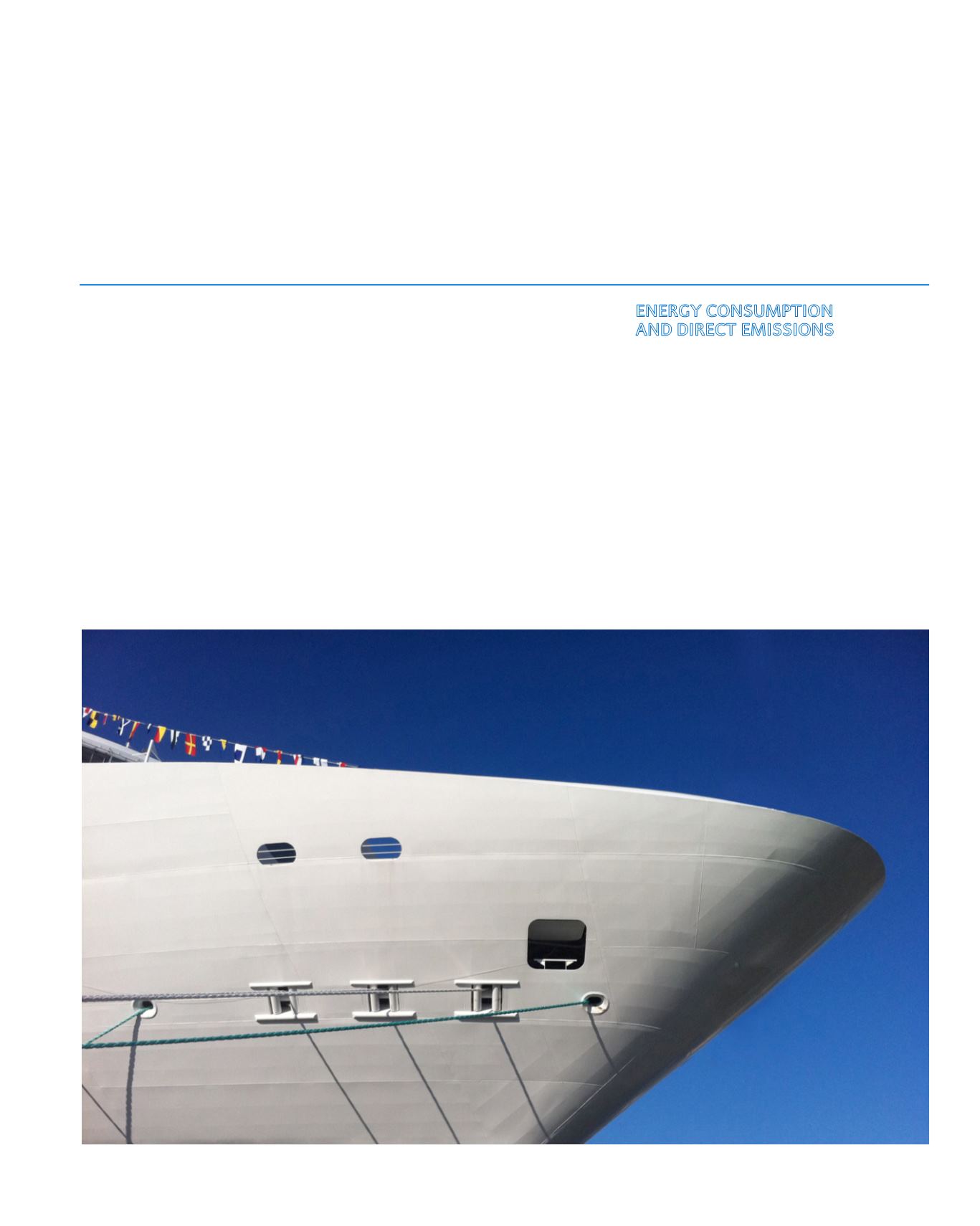

Optimization of fuel use and reduction
of emissions are strategic sustainability
objectives for Costa Cruises.
Ahead of the renewal of the fleet with
the introduction of the first LNG-
powered vessels, these issues are
tackled by means of a multipronged
approach comprising all possible areas
of intervention and practical solutions
for the 15 ships currently in service,
without ever impinging in any way on
safety, which remains the number one
priority.
Energy efficiency
and carbon footprint
ENERGY CONSUMPTION
AND DIRECT EMISSIONS
Ship propulsion and operations
account for almost all shipboard energy
consumption and direct emissions of
CO
2
. IMO regulations include as a basic
requirement the development of a
ship-specific
Ship Energy Efficiency
Management Plan
(SEEMP).
Efforts to reduce consumption of
shipboard fuel
3
concentrate mainly
on optimization of
vessel speed
and
course
adjustment, implementation
3
Two kinds of fuel are used on board
Costa’s ships: 1) Heavy Fuel Oil (HFO),
a type of blended oil used in ship’s engines
and for the generation of electricity and
2) Marine Gas Oil/Marine Diesel Oil
(MGO/MDO), which is more refined fuel
intended for marine use, employed for
auxiliary services. In accordance with the
Corporation’s internal regulations, HFO is
further broken down into two categories:
High Sulfur Fuel Oil (HSFO) and Low
Sulfur Fuel Oil (LSFO); the latter has a
reduced sulfur content and is a much
cleaner fuel than the former. Costa Cruises
uses LSFO whenever requested.
















